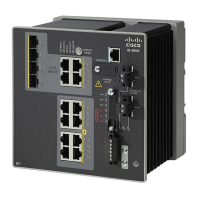Hunt Lists
A hunt list consists of a group of extensions that can answer calls. You set up hunt lists for the purpose of
distributing calls amongst the users that belong to the group. For example, if the company does not have a
receptionist and several users must answer calls, consider setting up a hunt list to ensure that calls are evenly
distributed amongst the users that belong to the hunt list. For example, if several administrative assistants
must share the call load for several managers, consider setting up a hunt list to ensure that all calls are answered
quickly. You configure hunt lists on the Hunt Lists page in the Cisco Business Edition 3000 Administrative
Interface. (select Users/Phones > Hunt Lists).You can create as many hunt lists as you want.
Extensions in a hunt list can belong to users or departments. You can assign any user or department extension
to a hunt list, but only those extensions that are assigned to phones can actually answer the calls. An extension
may belong to more than one hunt list.
Pilot extensions for hunt lists must be in the extension range(s), but pilot extensions do not get assigned to
users or departments.
For the members (extensions) that belong to the group, you can select one of the following distribution methods:
An idle member is not servicing any calls. An available member is on an active call but is available to
accept a new call. A busy member cannot accept calls.
Note
• Top Down—Cisco Business Edition 3000 distributes a call to idle or available members (extensions)
starting from the first idle or available member of a hunt list to the last idle or available member.
• Circular—Cisco Business Edition 3000 distributes a call to idle or available members starting from the
(n+1)th member of a hunt list, where the nth member is the member to which Cisco Business Edition
3000 most recently extended a call. If the nth member is the last member of a hunt list, Cisco Business
Edition 3000 distributes a call starting from the top of the hunt list.
• Longest Idle Time—Cisco Business Edition 3000 only distributes a call to idle members, starting from
the longest idle member to the least idle member of a hunt list.
• Broadcast—Cisco Business Edition 3000 distributes a call to all idle or available members of a hunt list
simultaneously.
Do not put extensions that are shared lines in a hunt list that uses the Broadcast distribution algorithm.
Cisco Business Edition 3000 cannot display shared lines correctly on the phone if the extensions are
members of a hunt list that uses the Broadcast distribution algorithm.
Note
Setting Up the System So that Incoming Calls Reach the Operator, on page 152
Call Pickup Groups
In the Cisco Business Edition 3000 Administrative Interface, you can add, edit, and delete call pickup groups.
The system defines a call pickup group as a group of users or departments that is designed to pick up calls to
any user or department within this group or in an associated group. A user or department can be associated
with multiple pickup groups. Each group has a unique number, known as a Group Pickup Number, which
Administration Guide for Cisco Business Edition 3000, Release 8.6(4)
OL-27022-01 51
Common Configuration Concepts in Cisco Business Edition 3000
